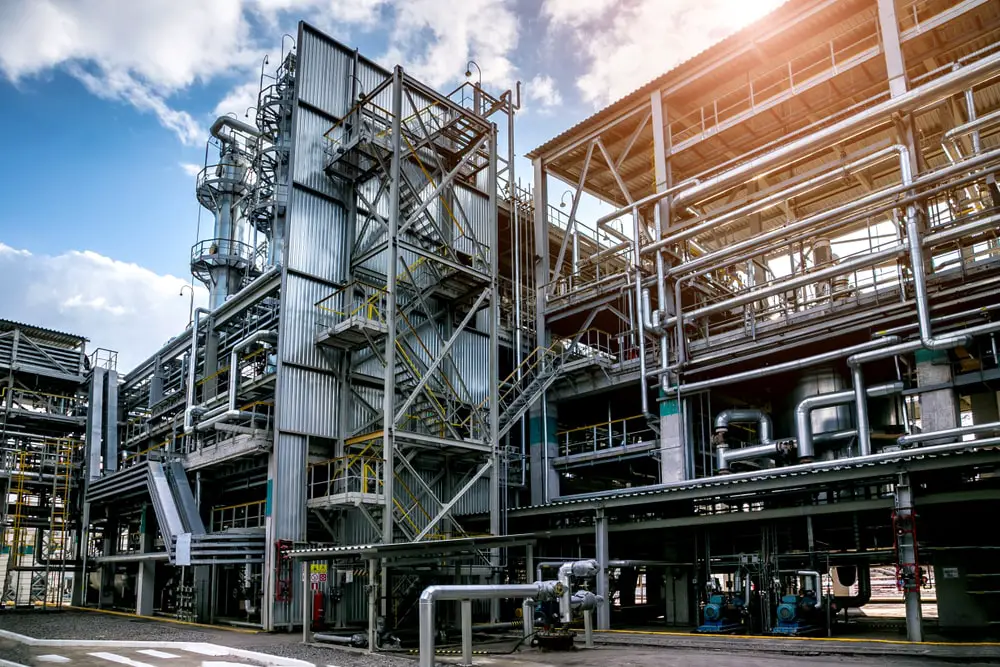Salary, Job Description, How To Become One, and Quiz
.jpg)
Aircraft Structure, Surfaces, Rigging and Systems Assemblers
Aircraft Structure, Surfaces, Rigging and Systems Assemblers assemble, fit, fasten, and install parts of airplanes, space vehicles, or missiles, such as tails, wings, fuselage, bulkheads, stabilizers, landing gear, rigging and control equipment, or heating and ventilating systems.
Table of contents
What they do
Aircraft Structure, Surfaces, Rigging and Systems Assemblers assemble, fit, fasten, and install parts of airplanes, space vehicles, or missiles, such as tails, wings, fuselage, bulkheads, stabilizers, landing gear, rigging and control equipment, or heating and ventilating systems.
- Assemble parts, fittings, or subassemblies on aircraft, using layout tools, hand tools, power tools, or fasteners, such as bolts, screws, rivets, or clamps.
- Read blueprints, illustrations, or specifications to determine layouts, sequences of operations, or identities or relationships of parts.
- Set, align, adjust, or synchronize aircraft armament or rigging or control system components to established tolerances or requirements, using sighting devices and hand tools.
- Attach brackets, hinges, or clips to secure or support components or subassemblies, using bolts, screws, rivets, chemical bonding, or welding.
Typical day
On a daily basis, Aircraft Structure Assemblers clean, oil, or coat system components, as necessary, before assembly or attachment. They clean aircraft structures, parts, or components, using aqueous, semi-aqueous, aliphatic hydrocarbon, or organic solvent cleaning products or techniques to reduce carbon or other harmful emissions.
A typical day for an Aircraft Structure, Surfaces, Rigging, and Systems Assembler will also include:
- Monitor robotic assembly equipment, such as snake-arm robots, used to assemble, seal, or swage aircraft structures.
- Attach brackets, hinges, or clips to secure or support components or subassemblies, using bolts, screws, rivets, chemical bonding, or welding.
- Inspect or test installed units, parts, systems, or assemblies for fit, alignment, performance, defects, or compliance with standards, using measuring instruments or test equipment.
- Cut, trim, file, bend, or smooth parts to ensure proper fit and clearance.
- Capture or segregate waste material, such as aluminum swarf, machine cutting fluid, or solvents, for recycling or environmentally responsible disposal.
Other responsibilities
Besides their typical day, Aircraft Structure Assemblers also monitor robotic assembly equipment, such as snake-arm robots, used to assemble, seal, or swage aircraft structures. They may also verify dimensions of cable assemblies or positions of fittings, using measuring instruments.
On a weekly to monthly basis, Aircraft Structure Assemblers install mechanical linkages and actuators, using tensiometers to verify the tension of cables. They might also swage fittings onto cables, using swaging machines.
In addition, the position and align subassemblies in jigs or fixtures, using measuring instruments and following blueprint lines and index points.
Although specific duties may vary, many of them splice cables, using clamps and fittings, or reweave cable strands.
To some Aircraft Structure Assemblers, it is also their responsibility to place and connects control cables to electronically controlled units, using hand tools, ring locks, cotter keys, threaded connectors, turnbuckles, or related devices.
What is the job like
Job satisfaction
Is this job meaningful
61% said they were satisfied with their job and 46% said they found their job meaningful.
Pros
Suitable for people who like practical and hands-on work.
Suitable for people who want to work in a supportive work environment.
It is easy to get into this career. Some previous work-related skill, knowledge, or experience is required to get started.
Demand for this career is growing.
Cons
Not suitable for people who like to help and teach others.
Salary is below average.
How much do they make
Average salary
Average hourly wage
Entry-level Aircraft Structure, Surfaces, Rigging and Systems Assemblers with little to no experience can expect to make anywhere between $33,200 to $40,100 per year or $16 to $19 per hour.
| Salary by experience | Annual | Hourly |
|---|---|---|
| Highest (Top 10%) | $83,530 | $40 |
| Senior (Top 25%) | $70,890 | $34 |
| Median | $53,160 | $26 |
| Junior (Bottom 25%) | $40,100 | $19 |
| No experience (Bottom 10%) | $33,200 | $16 |
This table shows the top 10 highest paying industries for Aircraft Structure, Surfaces, Rigging and Systems Assemblers based on their average annual salary.
| Salary by industry | Annual | Hourly |
|---|---|---|
| Scheduled Air Transportation | $77530 | $37.27 |
| Management, Scientific, and Technical Consulting Services | $65150 | $31.32 |
| Architectural, Engineering, and Related Services | $63560 | $30.56 |
| Aerospace Product and Parts Manufacturing | $56390 | $27.11 |
| Navigational, Measuring, Electromedical, and Control Instruments Manufacturing | $56050 | $26.95 |
| Support Activities for Air Transportation | $47620 | $22.90 |
| Nonscheduled Air Transportation | $32110 | $15.44 |
View more salary by industries here.
Where can they work
Where can Aircraft Structure, Surfaces, Rigging and Systems Assemblers work? Here is a table showing the top 10 largest employers of Aircraft Structure, Surfaces, Rigging and Systems Assemblers including the average salary in that industry.
| Employers | Total Employed | Annual Salary | Hourly Wages |
|---|---|---|---|
| Aerospace Product and Parts Manufacturing | 34250 | $56390 | $27.11 |
| Support Activities for Air Transportation | 1160 | $47620 | $22.90 |
| Scheduled Air Transportation | 230 | $77530 | $37.27 |
| Architectural, Engineering, and Related Services | 150 | $63560 | $30.56 |
| Navigational, Measuring, Electromedical, and Control Instruments Manufacturing | 110 | $56050 | $26.95 |
| Nonscheduled Air Transportation | $32110 | $15.44 | |
| Management, Scientific, and Technical Consulting Services | $65150 | $31.32 |
What is the work day like
Working hours
Working schedule
How often do you use email in this job?
Telephone
How often do you have telephone conversations in this job?
Group discussions
How often do you have group discussions in this job?
Public speaking
How often does this job require you to do public speaking?
Level of competition
How much competitive pressure is in this job?
What is the work environment like
Office-style environment
Indoors in an environmentally controlled condition
Warehouse-style environment
Indoors in a non-controlled environmental condition such as a warehouse
Outdoors
Outdoors exposed to all weather conditions
Outdoors – Under Cover
Outdoors but under cover (e.g. structure with roof but no walls)
How to become one
Difficulty to become one
Required level of education
What level of education do you need to perform the job?
Relevant majors
Airframe Mechanics and Aircraft Maintenance Technology
Aircraft Powerplant Technology
Avionics Maintenance Technology
Relevant work experience
How much related work experience do you need to get hired for the job?
On The Job Training
How much on the job training do you need to perform the job?
Should you become one
Best personality type for this career
People with this personality type likes practical and hands-on work. They prefer working with plants, animals, and real-world materials like wood, tools, and machinery.
People with The Builder personality type likes practical and hands-on work. They prefer working with plants, animals, and real-world materials like wood, tools, and machinery.
People with The Thinker personality likes to work with ideas that require an extensive amount of thinking. They prefer work that requires them to solve problems mentally.
People with The Artist personality likes to work with designs and patterns. They prefer activities that require self-expression and prefer work that can be done without following a clear set of rules.
People with The Helper personality type likes to work with people and in teams. They prefer work that allows them to build relationships with others.
People with The Leader personality likes to start and work on projects. They also like leading people and making many decisions.
People with The Organizer personality type likes to follow set procedures and routines. They prefer working with data and details more than with ideas.
You can read more about these career personality types here.
People who are suitable for this job tend to like work activities that include practical, hands-on problems and solutions. They like working with plants, animals, and real-world materials like wood, tools, and machinery.
They also like following set procedures and routines. They like working with data and details more than with ideas.
Take this quiz to see if this is the right career for you.
Work Values
Which values are the most important to a person’s satisfaction for this job?
You are someone who is results oriented. You prefer work that allows you to utilize your skills and abilities while at the same time giving you a sense of accomplishment.
You are someone who values job security, steady employment, and good working conditions. You also prefer work that keeps you busy all the time with something different to do every day.
You are someone who values job advancement and leadership roles. You prefer work that receives recognition for the work you do and jobs that are looked up to by others in the company and your community.
You are someone who likes to provide a service to others. You prefer a work environment where you can work with your co-workers in a friendly non-competitive environment.
You are someone who values a company that stands behind their employees. You prefer a work environment where everyone is treated fairly and is being supported by the company.
You are someone who likes to work on your own and make your own decisions. You prefer work that requires little supervision and are allowed to try out your own ideas.
Don’t know which career to pursue?
Take the career quiz to find careers that match your personality type.
Take The Career Quiz
.jpg)




.jpg)
.jpg)
.jpg)
.jpg)
.jpg)
.jpg)
.jpg)
.jpg)
